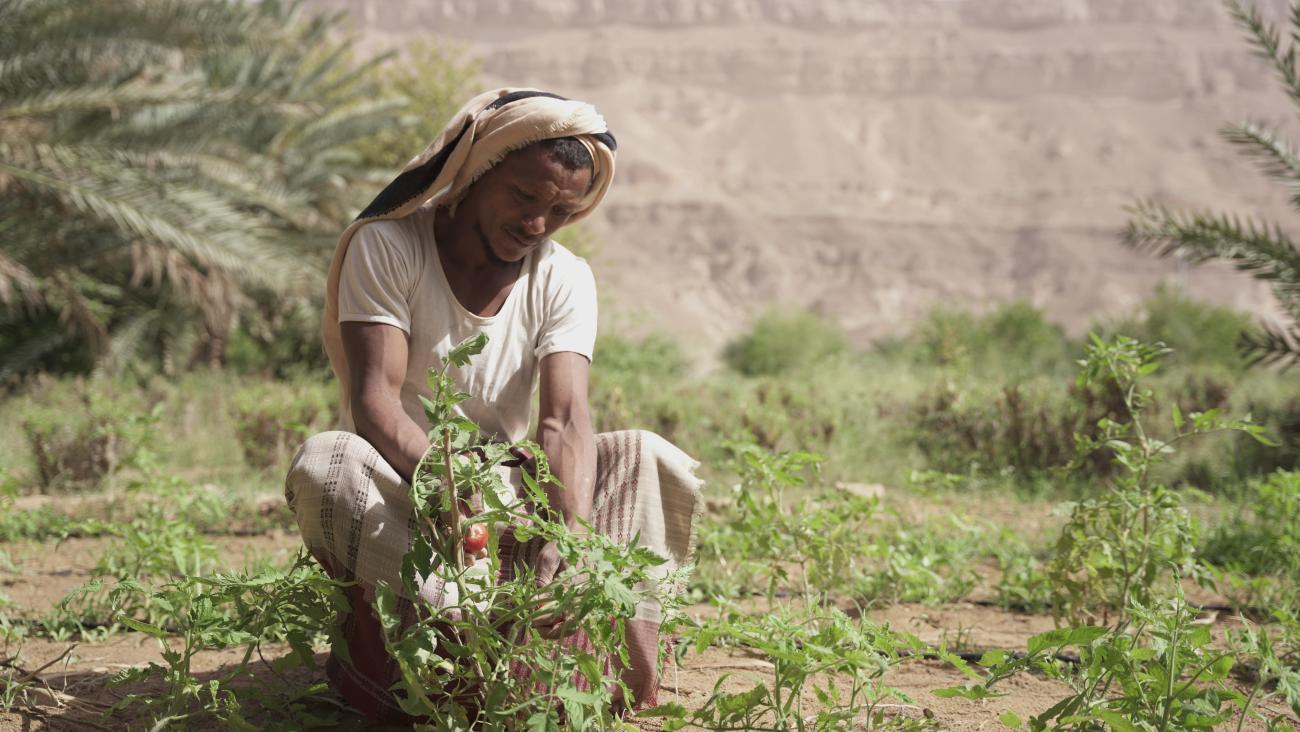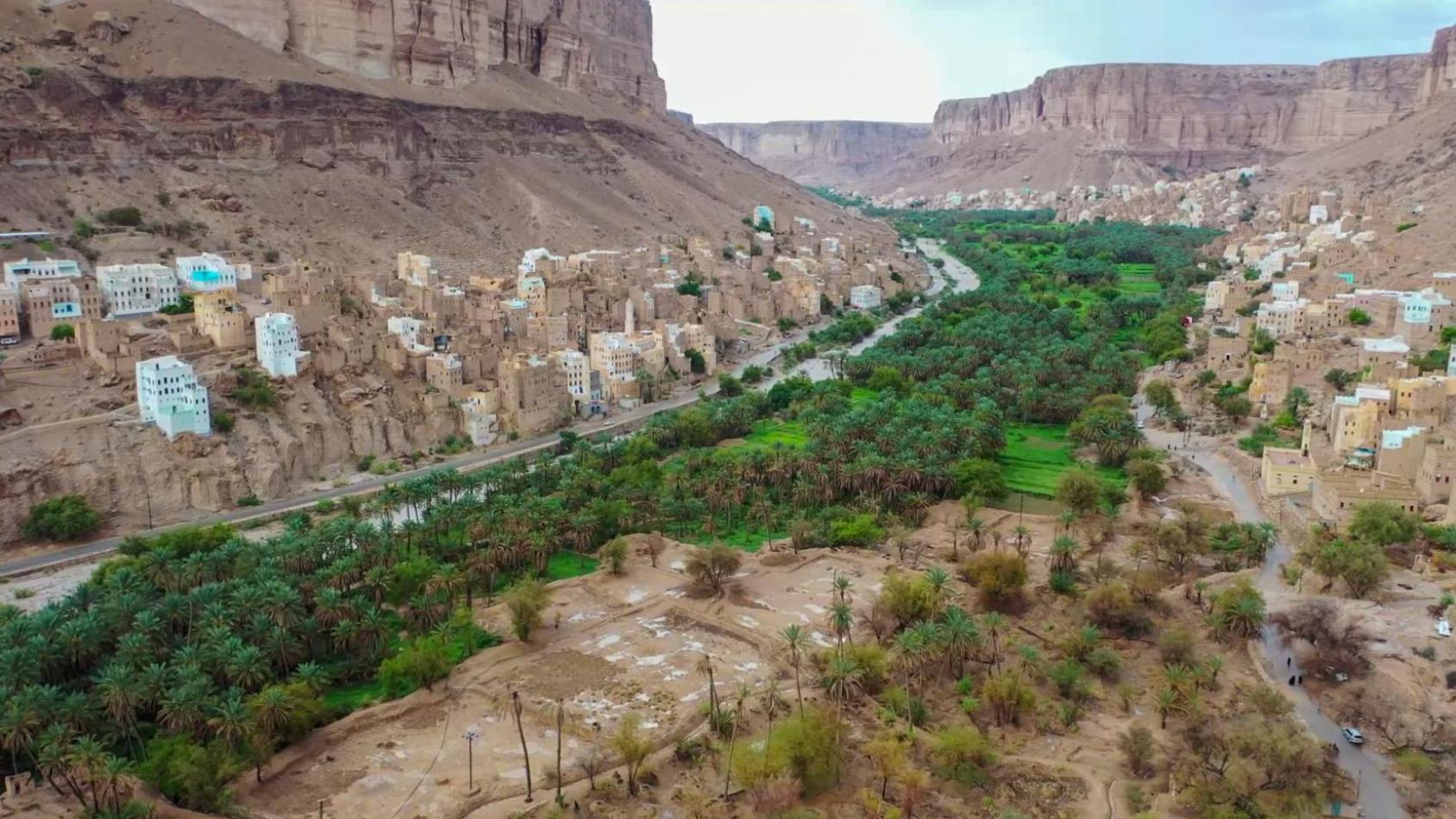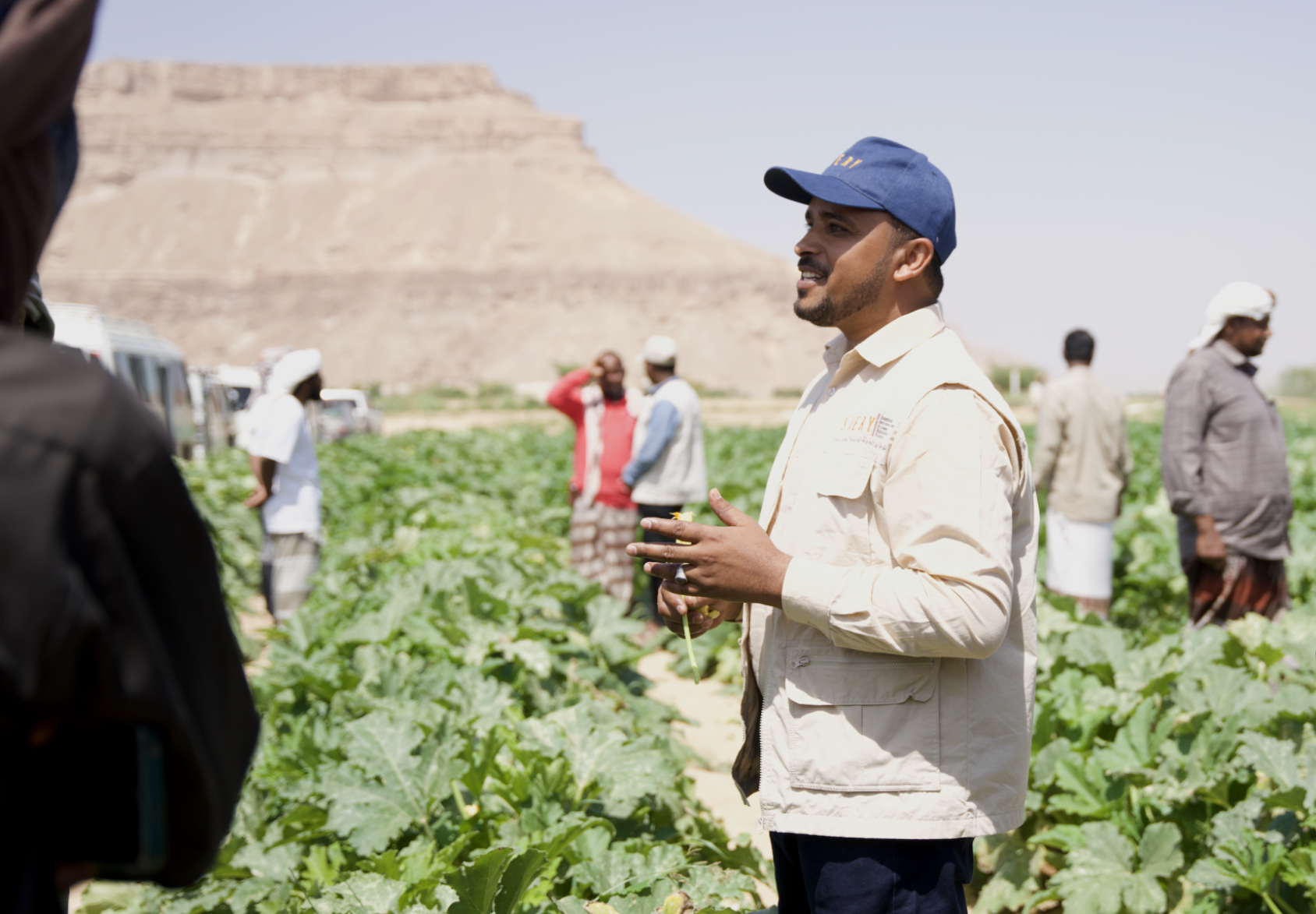Every last drop: Yemen’s farmers switch to modern irrigation

In Yemen, eight years of conflict and instability have resulted in the collapse of basic services, increased unemployment, and severe economic disruptions, particularly within the agricultural sector.
While only a small percentage of the country's food is domestically produced, nearly two-thirds of Yemenis depend on agriculture for their livelihoods. The sector's productivity has been negatively affected by water scarcity and the high cost of conventional irrigation methods. To address this, modern irrigation techniques are crucial.
The district of Tarim – in Hadhramout governorate, eastern Yemen - looks like a green oasis with palm trees, yet it is exposed to seasonal floods and extreme heat waves that impact farmlands and damage crops.

The national authorities and the United Nations Development Programme (UNDP) knew that something had to be done to save not only the farmlands, but also the livelihoods of the community.
Through a joint project funded by the European Union, ‘Strengthening Institutional and Economic Resilience in Yemen (SIERY)’, UNDP worked with local authorities to respond to economic and agricultural needs across the country by engaging community members, the private sector, and civil society in decision making and planning.
To date, the project has resulted in increased production, improved living conditions for farmers, and reduced irrigation and fertilization costs, which have greatly benefitted the local communities. The project also helps to develop local authorities’ capacities to manage public expenditures related to gender and youth.
Producing crops efficiently and at low costs
Adel Ruwished, a 36-year-old farmer from Wadi Al-Dhahab in Tarim, used to cultivate palm trees using traditional methods such as flood irrigation. However, due to the country’s deteriorating conditions and the rise in petroleum and agricultural prices, these methods were becoming too expensive.
Fortunately, Adel was able to improve his farming techniques by using modern irrigation networks and agricultural supplies, as well as training provided by the project. Modern irrigation systems are used to cultivate crops that require small amounts of liquid over short periods of time, as opposed to flood irrigation. These systems help conserve water by anywhere from 40% – 80% compared to traditional methods.
By switching from flood irrigation to drip irrigation, he has seen a significant reduction in costs while improving crop quality and increasing profits and critically, saving precious water sources.
Simple innovations big impacts
Karama Obaid, a farmer from Damoun area of Tarim, has been using traditional irrigation methods through earthen channels for the past 60 years – despite the fact that they result in water loss from evaporation, are expensive, and require a lot of time and effort to oversee. Fortunately, after the project intervention, Obaid noted a significant change: “To my knowledge, each farmer has experienced increased production, reduced irrigation and fertilization costs, increased income, and improved living conditions.”
Shukri Bamousa, Director General of the Agriculture and Irrigation Office in the Valley and Desert of Hadhramout, explains how this has helped farmers to improve vegetable crop chains: “Farmers in Tarim who grow vegetables, such as zucchini and onions, have greatly benefited from this system, as it provides the exact amount of water that the soil needs.”
Ali Abdulsalam, Project Officer at the Small and Micro-enterprises Promotion Service in Hadhramout doubles down on this impact: "The project supports farmers in palm and vegetable cultivation in the Tarim district, and reduces water depletion by up to 40% for cultivating palms and 80% for vegetable crops. The project made a significant difference for farmers, as evident from their increased profits and reduced costs that used to burden them,” he observed.

In the Ghayl Ba Wazir district, water canals for Henna farmers were cemented over a length of 2,866 meters instead of using dirt canals. This change resulted in water savings of 40% - 50%.
Overall, Tarim has benefitted from 31 irrigation pipes to date palm farms, with a total length of 5,456 meters. Additionally, the project provided bubbler irrigation networks to 70 date palm farms in the Tarim district and drip irrigation networks to 300 vegetable farms.
Looking ahead, the success in Tamrin, offers hope for other farmers in other regions in Yemen; scaling up the lessons and continuing to build capacity at the local level will be crucial in the coming years. Boosting water conservation and promoting efficient use is expected to have a snowball effect across entire agricultural value chains- impacting cooperatives and communities alike. Every drop in Yemen will go a long way.
This story was prepared by the UN Information Centre in Sana'a.
For more information about the UN's work in Yemen, please visit yemen.un.org.













